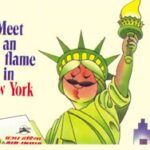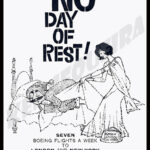Brand New Resolutions MMXXIV
I know, I know. Resolutions are passé. Nonetheless, I had to vent these thoughts that had been bubbling in my mind for the past few days and what better a way than to write a blog post. Since it was that time of the year I just decided to go ahead and put them in the form of an ancient ABVS tradition.
Without much further ado, let us jump right into my proposed Resolutions for Brands in 2024.
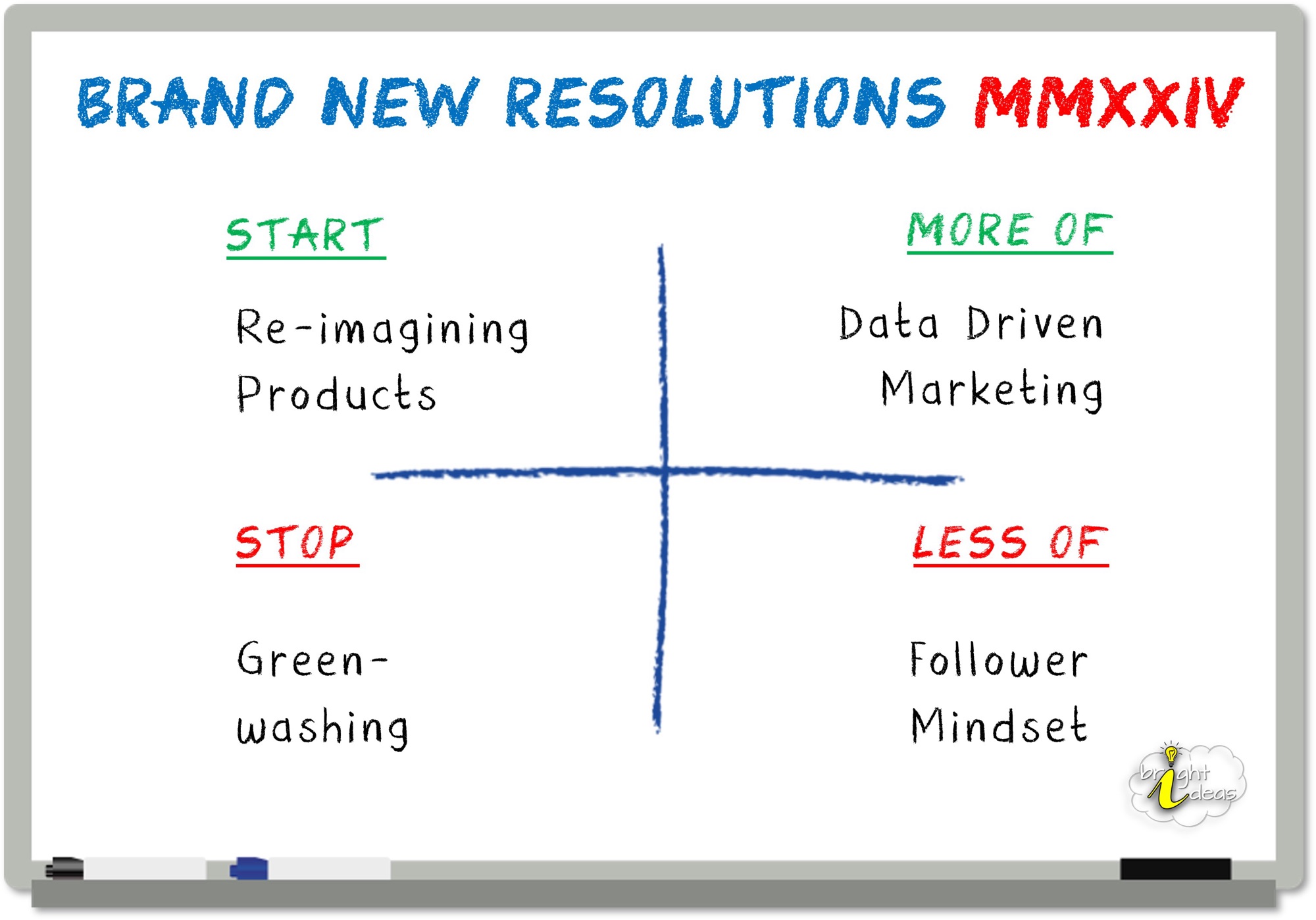
START | Re-imagining Products (&Solutions)
Enough and more has been written, discussed, and debated about how consumer and customer behaviour has seen a paradigm shift post-pandemic. That said, how many brands have re-thought or re-designed or re-organized their offering on account of this change? Not many one would reckon.
All of us acknowledge that it is a more connected world than it was pre-COVID19. Not because the technology was not available but because the adoption of technology had not happened. The pause in commerce in the 2 years of lockdowns has accelerated adoption journeys and tech roadmaps.
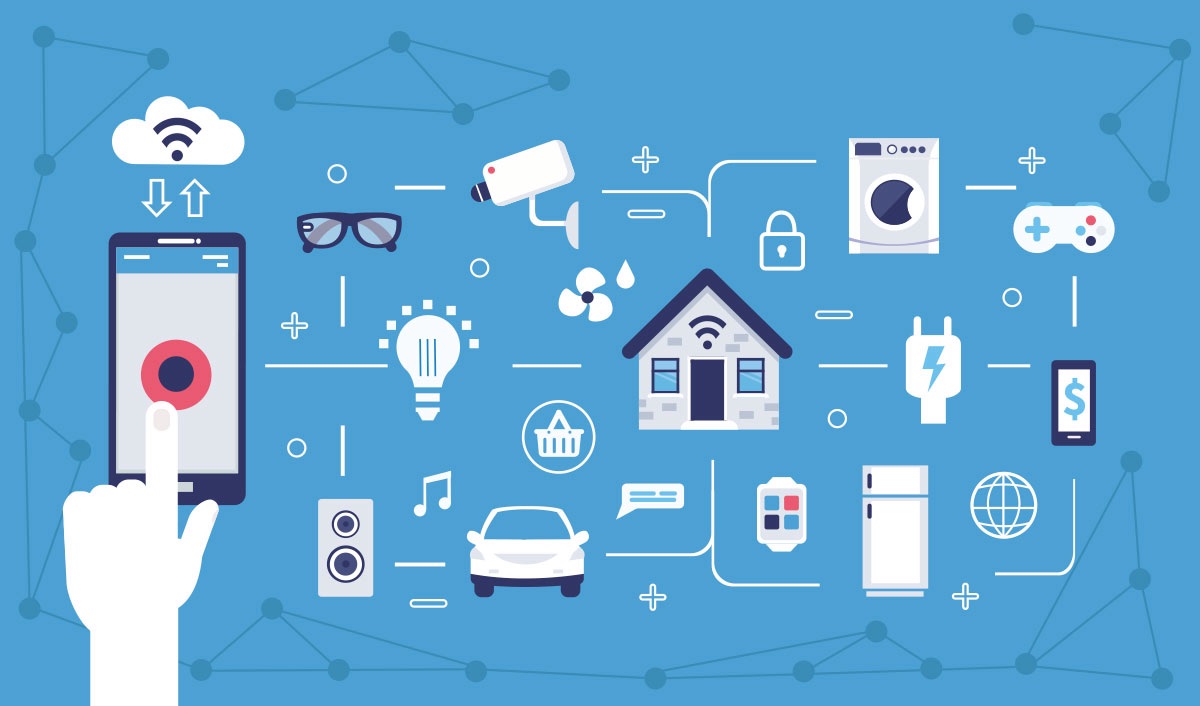
Therefore, in an IoT led world with AI making headlines and some real headway, dumb products without connectivity and with little or no user interaction are setting themselves up for failure if not extinction. Brands and more specifically Product Managers need to look hard at the JOB TO BE DONE and introduce some level of intelligence and interactivity in their offerings. The trap to avoid though is it being a lip-service or a gimmick.
STOP | Green-washing
Consumers today are more discerning. Only the brands GENUINELY integrating SUSTAINABLE in their narrative shall be able to or shall we say allowed to reap the rewards. Overtly simple methods of the last century such as using adjectives such as “Natural”, “Organic”, “Traditional” in communication will not work. It’s not just the offering but also the value proposition that needs to be sustained (sustainable).
Yes, there is a consumer who is willing to pay a premium for sustainably produced/sourced/managed products and solutions but that does not mean brands have a birthright to a higher price-point.
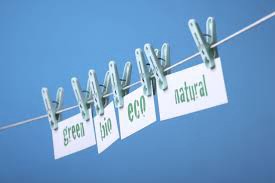
All brands sooner or later will need to spell out their vision and sustainability goals. Whether from a compliance perspective or from a consumer preference perspective or a market valuation perspective, brands shall be compelled to share their sustainability dashboards.
MORE OF | Data-driven Marketing
The downside of the social era has been that brands have started to confuse conversations with/ feedback from consumers with primary research, analysis, and culling insight. All marketers do understand that the Voice of Consumer is the starting point not the point itself. It is imperative that brands plan for and ensure that a strong understanding of the consumer/user continues to be the basis for creating products or solving problems.

Any understanding of the market that is built on data, reports and research is paramount and should take precedence over anecdotal evidence.
Research aside, consumer immersion is hygiene and brands should mandate this for their team. Every minute spent observing consumers in their setting is invaluable.
Many of my past colleagues at Nokia have (at that point in time very grudgingly) spent tens if not hundreds of hours in consumer visits. The repository of consumer understanding that the exercises built is something that I am sure all of us bank on till date – it is become the part that has honed our marketing intuition.
LESS OF | Follower Mindset
This is a pet-peeve. Also a sign of a lazy marketing organization. If something has worked for Brand A it is not necessary for Brand B to respond with a “Me Too”. Caution here is not to confuse this with being a fast-follower which isa well-accepted strategic approach.
A follower mindset is by definition reactive. Marketing teams that craft quick communication or value propositions based on market feedback beware. The battle for counter-share and shelf-share shall always force sales teams to demand an equivalent for a competitor’s new launch or variant. It is incumbent on the Marketers in the organisation to alter value for the consumers.
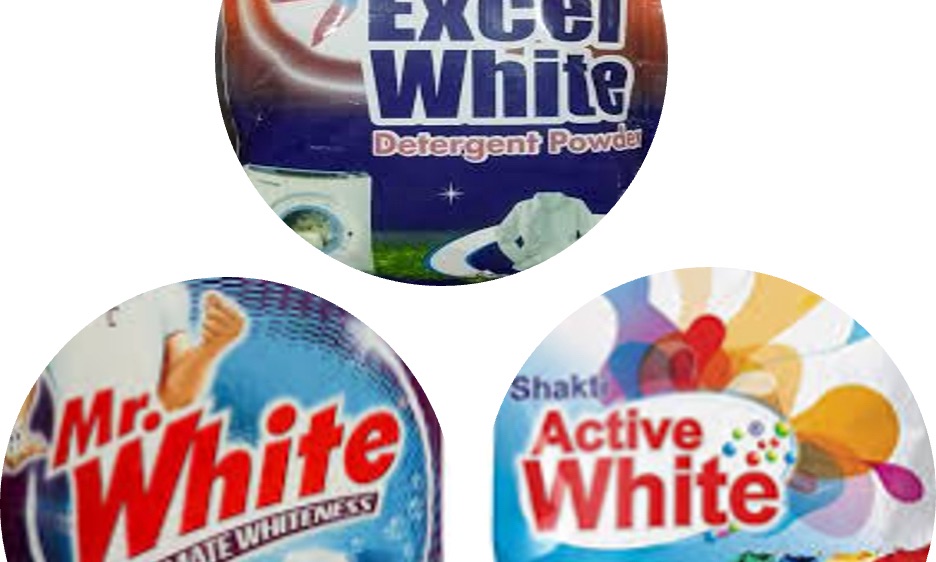
So be it a extra-lathering shaving cream or extra-whitening soap with dirt busters, the response cannot and should not be bigger, better, faster, more alone.
Points mentioned in the START and MORE OF if adopted should help brands come up with better ideas.
Here’s wishing all fellow marketers a great 2024!
Brand New Resolutions MMXVI
Hello!
Thank you all those who kept your faith in A Brand View Story…I am conscious that this blog lost its steam post April this year! Guess this is what happens if you back RaGa as a brand. Well…the real reason was that I got busy with the launch of my debut novel Eighteen The End Of Innocence. Incidentally though I started the morning with a troll on RaGa..so I am gonna give him a break and come back to Brand New Resolutions for 2016. We are gonna stick to my by now familiar format so here goes…
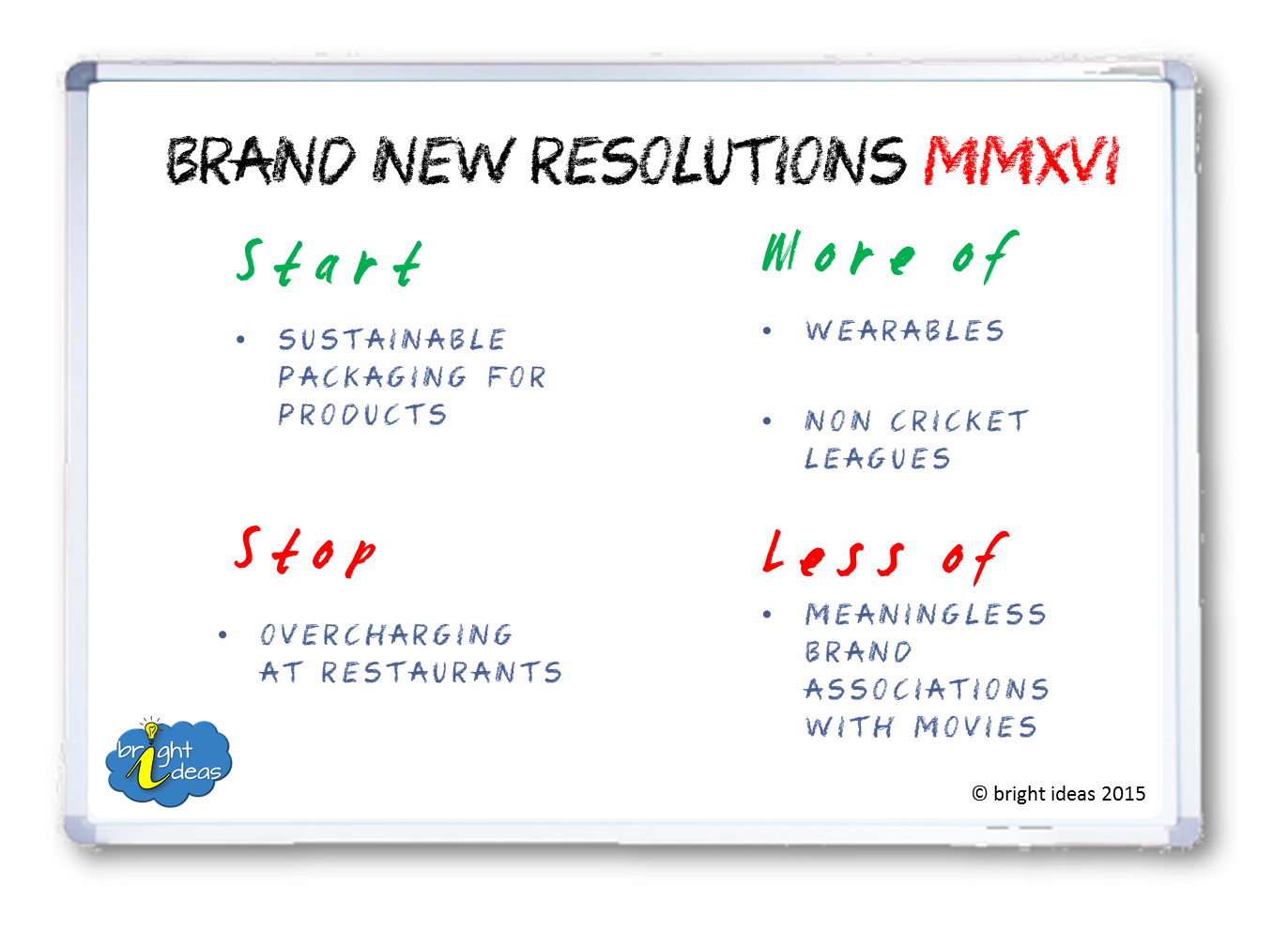
START Sustainable Packaging. Made a train journey recently and trust me the sight along the railway tracks was not a pleasant one. Tonnes of branded litter just lying around. From PET bottles to bags of wafers there they were strewn across boldly displaying their brands. If plastic is bad for the environment and use of paper leads to cutting of trees isn’t it about time we had more environmentally sustainable options? I would pay a rupee more if I had to. Hoping we all would.
Sustainable Packaging. Made a train journey recently and trust me the sight along the railway tracks was not a pleasant one. Tonnes of branded litter just lying around. From PET bottles to bags of wafers there they were strewn across boldly displaying their brands. If plastic is bad for the environment and use of paper leads to cutting of trees isn’t it about time we had more environmentally sustainable options? I would pay a rupee more if I had to. Hoping we all would.STOP

Overcharging! This one is a plea more as a consumer. A lot many restaurants organized and stand alone alike take their customers for a ride when they present the bill. This overcharging is mainly done under the garb of taxation. Larger populace is ignorant or unaware with regard to the taxes that are applicable when they are dining out and succumb to this con. It is not appropriate to take names or paint the industry with a broad brush but it is reality that a sizable number indulge in this malpractice. It would bode well for chains if they ensured their billing practices are in accordance with the law. Fortunately for them India is not a land where class action suits are filed else quite a few brands could potentially be caught on the wrong side of law.
 MORE OF
MORE OFWearables! We have seen a flurry of watches in 2015 on Android and iOS platforms and they certainly have piqued curiosity in many of us. Would like to see this go beyond watches during 2016 and within the watches space itself; more utility apps would be nice to see.
 Non-cricket leagues! It was heartening to see brands support sport other than cricket. The Football league, Kabbadi league, Tennis league all survived another season. The fact that TV ratings saw an increase for Kabbadi and also for the Football league (except on days when there was cricket featuring India) augurs well for both the future of the sport and the potential that exists for brands.
Non-cricket leagues! It was heartening to see brands support sport other than cricket. The Football league, Kabbadi league, Tennis league all survived another season. The fact that TV ratings saw an increase for Kabbadi and also for the Football league (except on days when there was cricket featuring India) augurs well for both the future of the sport and the potential that exists for brands. LESS OF
LESS OFMeaningless Brand Associations with Bollywood movies. Believe that brands tend to risk their credibility when they associate with motion pictures. These associations more often than not are led by stars rather than any synergies between the content/story-line of the film itself. Brands would do better than to just chase good money behind their brand ambassadors bad professional choices.
Avatars: How Mascots Help Brands Engage Better
 We have all as marketers discussed, debated, worked on creating, shaping, modifying the brands that we have managed. Often the central point of conversation would have been about the brand character, its personality. We would either have brand bibles that gave a pen picture of the brand or at times written one de novo.
We have all as marketers discussed, debated, worked on creating, shaping, modifying the brands that we have managed. Often the central point of conversation would have been about the brand character, its personality. We would either have brand bibles that gave a pen picture of the brand or at times written one de novo.What these pen pictures do is that they make the brand tangible for us. As marketers we have given several dimensions such as names, personalities, characteristics some have also given their brands a face!
Mascots for brands have been around for as long as we have known brands. Brands with mascots achieve a lot with very little. It takes most brands time and effort in the form of consistent communication to establish the character traits and a personality for themselves. Of course along with a Hail Mary for it to be understood by the consumers the way it is intended.
Today more than ever before, in an era of increasing choices and decreasing attention spans mascots can play a very significant role in carving consumer mind-space for brands. The digital natives of today understand and also identify with the concept of “avatars”. The digital natives understand that though not the actual person, the avatars are perhaps the nearest likelihood or the self-projection.
From a brands perspective it allows consumers to interact with a “face” or a “person” instead of some nameless, faceless representative. It adds that little bit of familiarity which is key for brand comfort.
Mascots help the brand engage better with its consumers
- They can be de facto brand spokespersons. Mascots can have real time presence in sociosphere, sharing, commenting, reacting and interacting with consumers all across.
- Mascots are more flexible than other brand assets and identifiers such as logos, colors and fonts. They can speak different languages, dress for the occasion helping brands localize and customize messages. Take on multiple avatars!
- The mascot can be a brands promoter at the point of sale. Driving recall, reinforcing the brands core values and even delivering a sales pitch.
- Brand ambassadors may switch or cease to be relevant but mascots will always belong to the brand.
- The sheen of the brand may diminish over time but mascots are ageless. Sometimes even out surviving the brand.
Mascots needn’t necessarily be cartoons, caricatures or animated characters alone. They can be and are human too. Many brands have successfully created characters and used them in communication across multiple touch points.
Here are a few brands and their mascots that according to me have served or are serving their brands superlatively across TV commercials, radio spots, print ads, hoardings and web films.
Look forward to your thoughts.
E.Q. -Brands that tugged at your heart
“I’ve learned that people will forget what you said, people will forget what you did, but people will never forget how you made them feel.”
Maya Angelou
This quote has been and continues to be a guiding factor for me as a marketing professional. It can be universally applied to not just to interpersonal situations but to communication as well. If the intent of all brand communication is to create positive impressions that at some point result in a purchase decision in favour of our brands and products then, how it makes one feel on reception is of paramount importance.
 If one were to look at brand messaging and how consumers would “warm up” to the brand there are 4 distinct levels. Communication that talks about the product and its features alone would get the coldest response. The prospects improve to lukewarm once you move from the I to the you and I space where there is talk of benefits. The slightly warmer zones are where brands cater to the status and social needs. The hottest zone is where the brand creates a connect with the consumer at an emotional level.
If one were to look at brand messaging and how consumers would “warm up” to the brand there are 4 distinct levels. Communication that talks about the product and its features alone would get the coldest response. The prospects improve to lukewarm once you move from the I to the you and I space where there is talk of benefits. The slightly warmer zones are where brands cater to the status and social needs. The hottest zone is where the brand creates a connect with the consumer at an emotional level.There are dozens of research papers that define and describe the range of human emotions putting them into positive and negative buckets. Marketers have for long argued whether to go the factual, cut and dry rational way when they communicate or to appeal to & arouse the consumer’s emotions to get them across the line.
 Derrick Daye at the Blake Project in his article 5 Drivers of Brand Insistence says that the ultimate goal of brand equity building is to move the consumer from brand awareness to brand insistence. He opines that there are five elements that drive a consumer to insist upon a particular brand to meet his or her needs – brand awareness, accessibility, value, relevant differentiation, and emotional connection.
Derrick Daye at the Blake Project in his article 5 Drivers of Brand Insistence says that the ultimate goal of brand equity building is to move the consumer from brand awareness to brand insistence. He opines that there are five elements that drive a consumer to insist upon a particular brand to meet his or her needs – brand awareness, accessibility, value, relevant differentiation, and emotional connection.That being said a brand cannot just churn out arbitrary sentimental stuff that has no connect with what they do or offer.
One question that needs to be answered is whether the communication conforms to or breaks the pattern. In a category where emotions are the norm another communication would not break clutter. Also, does the communication provide adequate proof points to the consumer? Remember it’s not enough to get the consumer all mushy, eventually all communication needs to translate into strengthening the brand.
Here’s a compendium of TVCs that caught my eye. They straddle a host of emotions and categories. Interesting to note how many of these brands are leaders in their categories. Some of them go beyond emotion and deliver a strong brand message whilst others definitely touch your heart yet fail to do much else.
[youtube=http://www.youtube.com/watch?v=HkuKHwetV6Q&list=PLdEKkPjjrZSfQD04FfQWvBnzMTb7DjfzM]
To leave your thoughts use the voting buttons J
[polldaddy poll=8210912]
Stage Flight: The Emergence of the Confident Consumer
 There are many who believe this increasingly connected virtual world is negatively impacting social skills. People tend to talk lesser to each other all of us have become Phubbers. Kids are replacing time spent playing with other kids with their eyes glued to one of the screens. Social networking sites alleviate any guilt associated with not keeping in touch with loved ones.
There are many who believe this increasingly connected virtual world is negatively impacting social skills. People tend to talk lesser to each other all of us have become Phubbers. Kids are replacing time spent playing with other kids with their eyes glued to one of the screens. Social networking sites alleviate any guilt associated with not keeping in touch with loved ones.While it is a lead in, this post is not to debate the case merits of the “multi-media world”. Suffice to say that there are extremely good arguments on both sides. This post attempts to reveal one such dimension or an insight.
The author believes that despite the virtual world having created these bubbles or silos that we live in, the people today are more willing to let themselves be judged than ever before.
The past decade or slightly more has witnessed the inception and growth of what are termed “reality shows” especially the talent or skill based variety. What separates one from fame and money (read success) today is not chance or opportunity, but their individual skill or talent. These shows and the advent of social networking have given wings and fuelled aspirations of millions. They have given rise to a new breed that does believes there’s a place in the spotlight for them. Whether it is singing, dancing, writing, acting, playing an instrument, cooking or for that matter something as inane as the ability to spit with precision on a target! There is a platform available to showcase ability. Opportunity today is ubiquitous.
Contests, competitions and pageants have been around a long time so what really has changed? It is the scale. The connected world has removed the subjectivity of the talent scouts and placed in the hands of the audiences. While it might not be the right way to do it, it has definitely democratized the process of selection. The opinion of the few is being supplemented with the taste of the masses. This for whatever its worth has lent itself to the perception of “fair play”.
More and more people are venturing out of their protective cocoons, unafraid what the world will say. In fact, the world is the promise and failure or ridicule, a very small price to pay. Talent and skill are just exaggerated manifestations of this insight. The gains need not always be monetary, they can be personal boosters too. The willingness to be judged is evident in every single act of in the social networking space. We put up our photographs, air our views, and share our moods all of which are being judged in real time. Likes, +1’s, re-tweets, views, comments, shares are the new determinants of success.
http://www.youtube.com/watch?v=8OcQ9A-5noM
http://www.youtube.com/watch?v=PPuJ1xRRFtQ
http://www.youtube.com/watch?v=D-qXhHCnEXY
This new found confidence transcends demographics, culture, social strata you name it. From babies to octogenarians nobody seems to have an issue with stage fright anymore. As an audience what is on view ranges from the amazing to the ridiculous. There is no such thing as infamy, popular is the bottom line.
You generate the content and put it out, the seekers of the content will gravitate towards it. The number of home-made or amateur or non-professional efforts that have viraled in the recent past are testament to this. Bloggers and twitterati with following are an integral part of digital marketing plans. Every day more and more content is put up on sites that give a platform to users. From e-books to self-produced music videos it’s all there. Every passing year talent hunts get unprecedented participation and ever increasing social footprint.
Overnight success is no longer an infrequent occurrence or a fairy tale it is expected. There are several more Justin Biebers knocking on the doors of fame.
As they say it’s not spreading your wings but courage that makes you fly!
A Bridge Too Far: When VALUE brands dream BIG(ger)
 Dream big they have always told you. To be honest, who amongst us doesn’t want to be the best they possibly can be? Well, that is where reality comes in. In the real world, there’s a difference in the trajectory flights of fancy and engineered flights take.
Dream big they have always told you. To be honest, who amongst us doesn’t want to be the best they possibly can be? Well, that is where reality comes in. In the real world, there’s a difference in the trajectory flights of fancy and engineered flights take.As marketers we have often looked at, wondered about and some of us might even have worked on products or brands that attempted to become a radically different version of their accepted selves.
This post takes a look at a few cases where the brands went against the grain, took the leap but fell or might end up falling short. Of course hindsight is 20/20. Here’s a take on what perhaps the brand bosses might have said to themselves before diving head-first.
“The product is worth it” or “We shall communicate rich” or “We’ll price it premium” etcetera etcetera.
Could work on any given Sunday if you did not have brand baggage to contend with. There are very few brands that the world knows of that entered at the value end of the spectrum and rode up to aspirational end. While some have made successful attempts with new brands, for some others the converse holds true.
Brands as they get built over time create their unique identity. This gets supplemented with the kind of products the brand puts into the market, the brands communication etc. Young & Rubicam’s BrandAsset™ Valuator Model is an interesting method of measuring brand value and relies on four fundamental elements of Differentiation, Relevance, Esteem and Knowledge that it says over time determine the strength and status of a brand.
Now for argument sake let’s construct how a Value brand’s strength and stature graph and compare it to how an aspirational brand would stack up. Intuitively one would say that a value brand does not normally offer great differentiation, is under consideration largely owing to the product category being high on relevance for the consumer, does not have outstanding credentials but makes the cut due to consumer’s familiarity with the brand. Simply put the customer does not mind buying a value brand, the brand deserves you.
An aspirational brand on the other hand is extremely differentiated in the consumers mind, high on relevance as the consumer is thinking he or she is deserving of the brand, held in high regard owing design or innovation pedigree and has an intimate connect with the consumer.
A brands image has tangible and intangible aspects and often it is the quantum of intangible that determines the premiumness/aspirational quotient of a brand. The sources of this “added” value could be the brand name itself, its outlook, its communication or how it is priced. The signature of an aspirational brand is its ability to command a price without having to justify it.
A Maruti Suzuki can make cosmetic changes to its entry level-mid level cars such as the Alto, Wagon-R etc. and continue to be a volume leader, however it fails miserably when it has to justify a high end Kizashi. Similarly for Tata Motors it can be fairly successful with a Safari but not Aria. No amount of “first of its kind” communication tickled any consumer fancy. These brands maybe are too entrenched in their “value” image and need to move mountains to justify even a slight premium.
While the Ferrari’s and the Lamborghini’s of the still fall under the “Unlikely to own” bucket for Indians their less flamboyant European cousins are perceived to be worthy of the premium they charge.
Coming to gadgets and gizmos, having tasted success with their entry and mid segment mobile phones brands like Micromax and Lava with their new brand are attempting to take a slice of the mid-high end pie of the mobile phone market in India. Micromax with Hugh Jackman and Xolo with their positioning pitch high. While one has brand baggage, the other is an attempt at building a brand ground up.
http://www.youtube.com/watch?v=R_UKea_y_dc
Trouble is they neither have the pedigree nor the sit-up and take notice kind of innovation to catapult them.
In the final analysis these brands would have been unable to build a bridge between their “value” roots and “aspiration” dreams.
Another perspective, they just might have moved from being a value brand to a valued brand. Who knows?!
Lost In Translation: Do Unrelated Brand Extensions Erode Brand Value In The Long Term?
Its election time in India. Starting April 07, the world’s biggest democracy shall go in for a marathon round of voting that would be spread over a month. The election jamboree has several contestants and in the fray are people from different walks of life. The noteworthy ones though are the contestants who have been in the public consciousness but for totally different reasons. If celebrities be considered individuals who are brands that they are courtesy their achievements/fame in their original profession. Their foray into politics therefore, is akin to a brand extension.
Now as marketers we are familiar with extensions and have seen many such examples. It is the author’s humble opinion that brand extensions into un-related categories are detrimental to the brand. Now I do not have empirical evidence to back this but more often than not, the brand attributes that made the brand successful in its space would not resonate with consumers in an un-related space. Yes there have been brave attempts at looking at a core set of values and carrying forward those elements that are relevant to the spaces related or otherwise that the brand is being carried into.
Since there is a constant back and forth amongst marketers regarding brands as people and people as brands (also the starting point of the current discussion), it would only be fair to look at things through Kapferer’s Brand Identity Prism
Just to refresh the model suggests that there are six facets to brand identity. As with individuals there is what gets projected and communicated and there is what gets received and understood.
- Physique: The brand in Its physical/tangible form eg. colour, packaging, product form etc.
- Personality: How the brand projects itself. Fun, young etc.
- Culture: A set of values that feed the brand.
- Relationship: the brand has with its consumers or stakeholders i.e. aspirational, inspiring, motivating, ostentatious etc
- Reflection: An image a brand creates regarding who its typical user would be. Example Blackberry with QWERTY phones for executives.
- Self-image: What the brand does to its consumer’s image of self. For example, ladies hand bags from fashion brands perhaps project “I can afford it” for a bulk of their consumers.
Coming back, the contestants in this election range from the “have-beens” to the “could not have beens”. Movie stars, sports persons and business icons they are all there. If one were to critically assess any one of them with respect to the brand that they have built in terms of elements 2 through 6 listed above with the assumption that physique is something they cannot easily change, most would find diminished relevance of their established identity in the new space.
Yes there have people who have translated their success in one field into success in another but the examples are few and far between.
I will defend my case with two examples one a business brand that made an extension into an unrelated field, another an individual. Both brands that attained dizzying heights forayed into an unrelated spaces and ended up eroding if not decimating brand value in the final analysis.
Exhibit#1 The individual: Amitabh Bachchan arguably India’s biggest movie star and an icon for millions of Indians across generations. The Big B as he is popularly referred to made according to him one of the biggest mistakes in life when he chose to enter politics. A super-star he contested elections from Allahabad, UP, India and dislodged a stalwart. What followed were years of turmoil as he got embroiled in allegations of corruption that tarnished his image. It took Amitabh Bachchan the brand over a decade to rise from the ashes, a deed that not all can perform.
https://www.youtube.com/watch?v=6jj7z7rt_9E
Exhibit#2 Kingfisher: Originally a beer brand it was extended to an airlines. The brand attempted to translate “the good times” value to the service industry. From offering a low-fares to the concept of premium economy the brand threw everything including the kitchen sink at the customers. Perhaps one of the better executed transitions only from a process standpoint. The change in logo from a perched Kingfisher to a flying one, the launch and the initial follow through were commendable. However, the ambitions were all consuming. The brand and the business were unable to reduce the revenues vs expenses gap and finally the airline operations that commenced sometime in 2004-05 came to a grinding halt in 2012-13. There is sure to have been damage of the episode on Kingfisher the beer brand, pretty sure some enthusiasts would be out there collecting the before and after data for Kingfisher.
Whose line is it anyway? Are taglines the changing face of brands?
 Taglines have been around for as long as brands have been, forever! Just like brands there are all kinds of taglines good ones, bad ones and also the what are they trying to says. They have and shall continue to form a part of Brand quizzes the world over. Brand taglines when and where use are an integral part of the brand identity and more often than not define the brand character.
Taglines have been around for as long as brands have been, forever! Just like brands there are all kinds of taglines good ones, bad ones and also the what are they trying to says. They have and shall continue to form a part of Brand quizzes the world over. Brand taglines when and where use are an integral part of the brand identity and more often than not define the brand character.There are brands that have stuck to the same line over years of their existence while some have had their taglines evolve. No wrongs or rights here. Just knowing what works for you best. Wait a minute! Did I just say what works for you? Damn right I did. That is precisely the trip most brand heads are on! Often we forget that as brands establish themselves the consumers become stakeholders, at the end of the day aren’t they the ones giving the equity?
Not so long ago, at one of the organisations I worked with, we were on the hunt for a new creative agency. So started my journey of identifying, short-listing and inviting agencies to pitch for our creative account. The invite was as is the custom accompanied by a brief. A week or more of clarification and discussions happened for the agencies to build their understanding and appreciate the brief. Without exception each of the six agencies that had confirmed participation asked us the same question.
“How amenable are you to changing the tag line?”
The tag line was to all of them and rightly so, the articulation of the brand intent/philosophy. Coming back, our response was of course “Open to discussion for the purpose of the pitch.” We had given the agencies the part that they loved best, a license for a creative tangent.
When they came back all of them, basis the homework they had done gave us their understanding of our understanding, the understanding of our customers and consumers and finally a prescription for where the brand should head. Different yet interesting perspectives all.
Point is, here were a set of people who were actually seeking to receive the messages that we were sending out into space and this was their interpretation of what we were trying to say. Imagine the number of interpretations that would exist in the real world where people are not seeking you out.
How many actually register these one, two or probably five words that we as brand creators and custodians plaster all over the place with our other identity marks? Assuming they are registering it, how unambiguous is our articulation?
Wordsmiths and brand creators within the organisation and the agencies perhaps spend hours and days crafting those magic words to perfection. These words that form the tag line are the brands way of telling the world at large either or all of these things, obviously just an indicative list
- What is our philosophy
- What we are
- What we do
- How we like to do things
- What do we want you to feel
- Where are we headed etc.
We also put frameworks in place with regard to the context, conditions and placement of the tagline on our communication and signage. One other thing that we should as brand custodians review is how often those very words are used as filter for our everyday actions and communication.
For example, what really is Nike’s interpretation of “Just do it” how do they live and execute it in their organisation. Most probably there is a thought through answer for this. However, who really is ensuring or checking to see whether that is the understanding of every employee or bulk of the consumers? Does it matter and if yes, what steps are taken to improve the understanding?
There are brands that use their tagline to communicate their journey or evolution. Thus changing it along the way. Moving it a step closer or a notch higher in terms of its relevance to its consumers. Some even move from the rational to the emotional space during the course of their journey.
For example Domino’s Pizza in India started off with their process and capability based “Nobody delivers better” to “Hungry Kya” trying to own food as a category on to “Khushiyon ki Home delivery” to its present tagline “Yeh hai rishton ka time”. Four taglines in a little under twenty years of history in India.
Another example would be that of Lenovo that went from the more cerebral “New World, New Thinking” to “For Those Who Do”.
There is also an increasing incidence of a local articulation of the global thought. Taglines that used to be sacrosanct and uniform across the globe some years ago now come in a local flavour almost like campaign lines. This perhaps is not just true for taglines alone, some brands are allow multiple versions of their logo to co-exist, transition is not really that high on the agenda.
Some brands like Nokia on the other hand have pretty much dropped their tagline “Connecting People” from its pride of place just below the name for regular use, bringing it out only on occasion.
The rules of the game, perhaps the game itself is changing. Brand identities of today exist in multiple spaces and forms. The role of the tagline just might be changing from registering impact to grabbing attention!
Bringing me to the starting premise what is the line for anyway? For you (the consumer) to understand me or for me (the brand) to tell you what I want to. Is there really any purpose the taglines serve or is it just a ball of wool thrown at the curious cats in the business schools to discuss, debate and write about.
Fellow marketers your opinions please.
The Sixth Sense: Appealing to Consumers with Mobile Advertising
 Marketers of today have to contend with a media consumption pattern that is very different say from even 5 years ago. Where the proverbial push comes to shove, India was always expected to leap-frog technology generations.
Marketers of today have to contend with a media consumption pattern that is very different say from even 5 years ago. Where the proverbial push comes to shove, India was always expected to leap-frog technology generations.For example not conforming to the traditional diffusion of innovation cycles India aborted its pager journey and quickly jumped onto the mobile phone bandwagon.
And what a ride it has been! Almost 19 years since the first mobile call in India was made possible, India has a mobile subscriber base just shy of 900Mn and almost 176Mn subscribers accessing internet through their mobile devices and 15Mn broadband subscribers. If the service providers play their cards right and the powers that control don’t get greedy the data revolution beckons!
Just for perspective, even the current number of mobile subscribers in India is 3 times the population of the United States, there are only six countries in the world that have a population in excess of 176Mn (the reported number accessing internet through a mobile device) and finally there are 175 countries that have a population less than the broadband subscriber base in India. Having posted phenomenal growth rates as a category the recent explosion has been in the smartphone space. In the last two years alone, smartphone shipments have grown by over 225%, an estimated 12Mn smartphones shipping every quarter in India during the past 2 quarters.
Point is, numbers in an Indian context have been and are always going to be there for taking. It’s a whole different question if we start peeling the onion layers and start getting down to the real stuff which is engagement levels.
The focus on ROMI or the Return on Marketing Investment has never been higher. With marketing budgets in absolute terms pointing south for most brands a multiple X return is the constant lookout of most marketing planners. Couple that with amount of measurability digital media affords, the growth in internet consumption using mobile devices and we can start to understand demand-supply dynamics.
Digital marketing brought in new paradigms and marketers such as us started living with the so called new rules of communicating with our customers. Mobile marketing has been a close follower of its cousin and is invariably clubbed with and is a sub-set of the “Digital strategy” of brands.
The concern that I would like to put forward is that we somehow seem to be applying same or similar framework to mobile as that of traditional internet marketing. And why should we be not? One could argue since numerous reports tell us consumers are doing the same things on mobile internet as the traditional desktop/notebook internet.
So why mobile advertising should be treated differently?
Communication sent out by brands has to appeal to the consumers senses for it to register. The mobile today is an extension of the consumers self almost an appendage. It is the consumer’s sixth sense! It connects the person to whatever is relevant at a given point in time, more importantly in space! Augmented Reality or AR as most of us have started to refer to it has been around for a while. Sadly though, marketers are yet to figure out its best use.
Keeping the above in mind, while building their mobile advertising plans brands should perhaps go back to the very basics of planning communication figuring out the Who, When and What.
Who to speak to. The quintessential Target Audience definition now with pin point precision
When to speak to them. Approach with an understanding of what they would be or have been doing. Which marketer has not built/studied a day in the life of the target consumer?
The additional dimension that mobiles have brought about is where. Brands therefore need to weave in the where into the context of the communication. Fortunately technology affords us this luxury.
With mobile advertising Time & Space are to my mind, an imperative.
Example, an 18 year old urban female mobile phone user who is a frequent YouTube or an Internet Radio user would be subjected to a certain kind of advertising because there are a certain set of brands that want to target her. Now, say if a cosmetic brand had to say different things to at different points during the course of the day they technically could and some brands are. It is common place to super-serve a certain segment and the wasted communication on rest of the audience is considered acceptable collateral damage.
Where is an extension of the logic and potentially an opportunity to give different messages. The same cosmetic brand could communicate differently depending upon whether this 18 year old girl was commuting, in her college canteen or sitting in a café in a mall? Time and space!
In the digital space brands are striving for engagement more than anything. So while we may still be buying and selling in CPM, CPC and CPV terms and busy calculating our ROMI basis the conversion rates. What is going to really bring in results is the quality of engagement that brands have with their TG.
Engagement is a function of opportunity & dispensation and the “where” has a significant impact on dispensation.
Brands, creative agencies, digital agencies, media agencies….anyone listening!
A Lot Like Love: Branding Your Way to your Consumers Wallet
The best way to a Consumers Wallet..is through his heart!

As marketers creating products and communication our biggest challenge is to resist an overload of the rational. Facts and figures as tempting as they seem seldom cut through. Moreover,in todays information age facts are available at the click of a button. So do we really need to be giving more?
Ideally, a brand-consumer interaction should evoke a positive emotion that gets nurtured over time facilitating decisions made by the consumer in favour of the brand. Most agencies argue in favour of an emotional communication and the brand managers are invariably guilty of pushing more fact than necessary. After all, powerful emotions need a powerful loop back to reality. Wrong!
It is true that emotions are invariably in response to a stimulus and that the extent or depth of consumer reaction is a function of the relevance. Brands attempt closure by communicating why the product is relevant to the consumer. We all know brands are built over several campaigns. While the consumer is not out there connecting the dots, there is a residual impact that is lasting which is where emotions come in. A rational journey almost always requires a brushing up on the other hand we can restart an emotional journey after a pause,no matter how long!
Often, the obvious is so close to us that it escapes notice. Having set an emotional context,I guess the mistake that we make is that instead of building on the relevance of the emotion to consumer we bring in the product features.
One may argue that there’s only that much that can be achieved within 30seconds or 45 or 60 whatever the edit length is. Well, yes and no. Yes, there is a limited timeframe to pack in everything. No, it is not just a TV spot that serves as our communication, we live our life in a continuum, there are other avenues available to build the bridge from the emotional to the rational and from thereon to purchase. I have talked about this in a previous post http://abrandviewstory.wordpress.com/2013/12/27/somewhere-over-the-rainbow-principles-for-finding-the-pot-of-gold-in-a-digital-world/ even outside the digital world money spent on a “build” is better than a “repeat”.
As a consumer, if the emotion that you evoked was powerful enough, I will try to find out more, I will find that bridge between the emotional and the rational.
Time and effort are better spent sharpening the emotional side of the communication leading upto why that emotion is relevant to the consumer.The greatest dis-service a brand can do itself is to evoke that emotion and leave it un-nurtured. You might as well spend money on your competitors campaign!
So as a brand or as a product communicating in the emotional plane, I should have answers to the following questions which are indicative not exhaustive:
1) The Promise: What am I going to make you feel? Joyous, triumphant, wanted etc.
2) The Method: How am I going to do it? I am a tool, pride of ownership etc.
3) The Reason: Why should you believe me? Endorsement, Trust etc.
4) The Provocation: Why now is the best time? Opportunity, urgency of need, etc
5) The Exclusivity: Why nobody else will do the way I do? Understanding you, knowing you etcA lot like love isn’t it?
And as food for further thought here’s a recent communication that caught my eye, how many of the above boxes do you think it would tick?
http://www.youtube.com/watch?v=R_UKea_y_dc&list=TL4ekK7bBB2W62RhS_eUfMTFOyzBONMfs0





